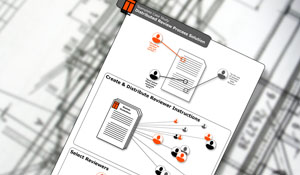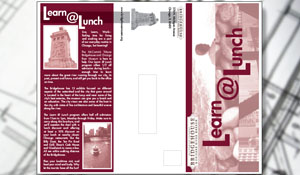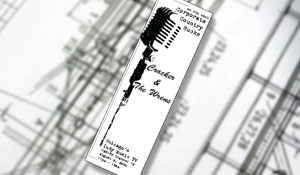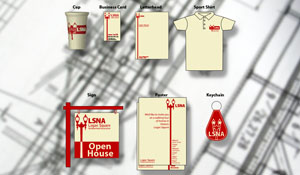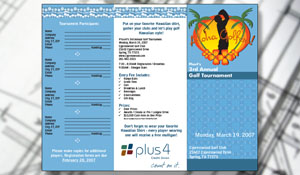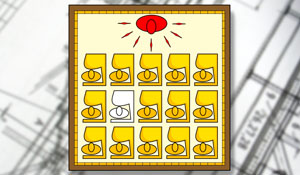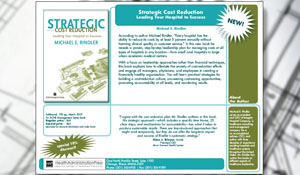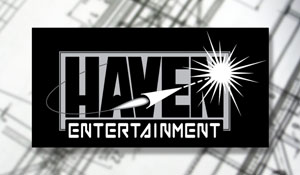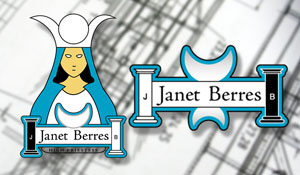- Educating the Design Client (part 1) : Introduction
- Educating the Design Client (part 2) : Types of Clients
Picking up from Part 1, you can often tell a great deal about the client and how to help them understand design by the feedback they give. Below are some examples of actual feedback that I’ve personally received (and I’m betting most other designers have as well).
“I don’t know what I want, but I’ll know it when I see it”
I can almost feel the collective wince out there. From ad agencies to freelance designers to illustrators, almost everyone in the creative business has heard this at least once from a client, and fears those fourteen words from then on. Tough love time, though; this problem is one we cause ourselves, usually right at the beginning of a project. We don’t completely understand the client’s problem, yet we launch into trying to solve it.
The key to solving this situation is asking yourself “What do I know about the project?” versus “What do I think I know about the project?” While you’re discussing the client’s needs, be clear with them that you need a certain amount of information before you begin. What’s the client’s main goal? – to sell cars, inspire trust, inform, entertain? If you can’t capture that goal in a single sentence, you’re still at the discovery phase, and shouldn’t even crank up the software.
One of the best ways to make sure you understand what the client needs is to restate that need back to them, and ask if that’s what they want. After meeting with a client initially, I email them once I get my notes in order, and ask them if I have it right. If I don’t, I try to pin down any misunderstandings, get clarification, then put together a project sheet and description for them to read (and sign off on, in some cases when the client is particularly vague) before I start work. If the client is concerned by this methodical approach, remind them that understanding their problem is the very first step in trying to solve it — without making it sound like a 12-Step lecture. At this stage, the time you invest is cheaper than if you had left too many questions left unanswered, and had been forced to do fifty revisions with no end in sight.
“I have no idea why I need you, but someone said I did”
It would be nice to think that having a designer on retainer is the “in thing” these days. Oh, would that it were – none of us would lack for work, and we’d all get to recline on beach in St. Tropez with our laptops. I don’t think I could live in Paris Hilton’s handbag, though.
Small businesses sometimes want to update their image, or may have outgrown their ability to effectively design for themselves, so they come to you. A little dumbfounded, they sit in front of you expecting…something. While this looks like the “…I’ll know it when I see it” client, it’s not – this person needs to know what you can do for them, and they need you to broaden their horizons a bit.
It pays to have a short presentation together for small business clients explaining your services. You may even go so far as to have a pamphlet that goes into depth about collateral, identity, web hosting and a few other terms we throw around a lot in design. This client needs to see value in what you do, so show them some examples and case histories where you actually helped someone like them. Show them before and afters of logos, letterhead, websites, and explain how and why you changed things to better suit the client. The phonecall or visit shows you that they’re willing to consider hiring you, now make your case.
“I don’t like ‘blue’ (or green, or Helvetica, or ‘words beginning with consonants’…)”
Every client has his/her own tastes, and most of the time has a decent feel for how things either fit or don’t fit into their current business. These clients used to frustrate me because I felt they limited the solutions I could present them, but I’ve learned that those limitations can really push me to come up with good designs that everyone is pleased with. The trick here is to figure out all those limitations before designing – specifically ask as part of your initial meeting, “Are there any elements, colors or styles that you’d prefer to work with? Any to avoid?”
It also helps if you have some sort of ‘style book’ worked up ahead of time, showing some common elements designers use. You can have them look at some of your previous work, and ask them what elements seem to work for them, and which don’t. They may not have an answer for you right away, but, given a day or two, you may receive an email with a hint or two on direction. If you elicit some kind of answer at the start, you’ll save yourself a ton of work down the road.
“I’m a/an (insert profession here) , and that makes me an expert in design also.”
I typically hear this sort of thing from particular professions — MDs, MBAs and lawyers. The thinking goes that if the client has been through more formal education than the designer has, the client understands design better; they just need you for the heavy lifting. A lot of patience is required here, but don’t be afraid of challenging that assumption, especially if the client’s design ideas seem to be taking him/her in a direction you know to be disastrous.
In the end, you may become so frustrated interacting with the client to the point of throwing up your hands, refunding their down payment, and telling them to seek out someone else to torture. Only you can decide if the hassles are worth it in the long run. I’ve learned what my boundaries are with such clients, and feel that they’re not typically worth the rise in blood pressure past a certain point – usually some time around the ‘major revision 5′ stage.
“You haven’t captured the right feel here.”
“So what kind of feel were you going for?”
“I don’t know – but that’s not it.”
People respond in some predictable ways to pressure. You can use that to your advantage with this type of client rather than entertaining thoughts of homicide. When you have this kind of dialog with a client, they haven’t told you enough about the project for you to continue — so stop. Better yet, tell them you’ve stopped production, explaining that until you can get a more definitive answer to your questions than “I don’t know”, work will stay stopped.
This is where the pressure comes in. If the project is under a deadline, remind them of that. Since you’re not doing any actual work for the client at this point (you did stop, right?), give them a day or two to come up with some answers, reminding them that the deadline looms just ahead. Once the panic of a tight deadline sets in, usually you’ll get the information you need, but be aware that some clients will scramble into ‘blame the designer’ mode. If you get an angry call from the client’s boss, calmly offer to forward some of the emails where you’ve asked for specific information, and haven’t gotten it. Now they have the pressure of a deadline *and* an angry boss.
“Too many notes”
To put it bluntly, your design intimidates them. They don’t understand it, and therefore come up with some inexplicable reason not to like it. The times I’ve heard this kind of remark from clients, it’s usually because the design wasn’t actually presented to them properly, rather it was simply revealed – voila! Presentation is more than just pulling the dropcloth off your creation. It also involves a bit of explanation on the designer’s part. Take the client through the design incrementally but not so slowly that they become bored – some people really don’t care to know every nuance of choosing the right shade of red, or a specific type. Give them a bit of insight into they whys and the wherefores.
“My last designer (did this thing s/he shouldn’t have done), and it came out fine.”
While the words ‘last designer’ should make you a bit wary from the start, think about this from the client’s perspective. Their ‘last designer’ may not have been that concerned with quibbling things like ‘quality’, or ‘standards’, and played the client like a fiddle to crib some quick cash. It could also be that the ‘last designer’ didn’t know the difference between high- and low-resolution graphics. You may not ever know what the client’s previous experiences may have been, but you can take steps to educate the client a bit, and build some trust.
Take a few minutes to explain why 72dpi graphics are not in their best interest for a sales brochure. Show some examples, even – I have a “things you should never do” brochure I whip out for just such an occasion with plenty of examples. As above, gauge the client’s level of attention, and don’t bore them to tears, but give them enough detail to help them understand the difference between, say, screen graphics and print, or spot and process colors. Let them know you have their best interests at heart, and they’ll learn to trust your instincts in future projects as well.

